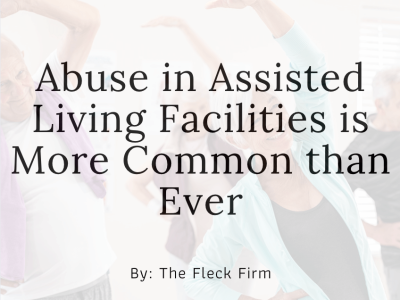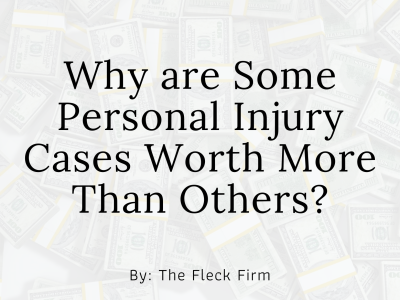Abuse by nursing home and assisted living employees often make headlines, but other residents may pose a greater risk of physical and emotional harm. Without enough resources or training, assisted facility employees may not prevent this abuse or properly handle it afterward. If they’re negligent, this situation may give rise to legal claims for compensation for the harm done.
How Common is Resident-on-Resident Abuse?
Eilon Caspi, a gerontologist at the University of Connecticut, according to the New York Times, searched media and coroners’ reports and found 105 resident deaths in long-term care facilities in the past 30 years caused by incidents involving fellow residents. She says the actual number is higher because these deaths often aren’t reported in the media attention or to the local authorities.
Other attorneys take contingent fees of 33% to 50% of your settlement.
We want you to keep more of your money.
Our contingent fee is only 30% on cases settled prior to filing suit.
A Place That’s Supposed to be Safe Can be Violent
Nursing homes and assisted living facilities, where the most vulnerable members of our society live, are some of the most violent places in society, according to Karl Pillemer, a Cornell University gerontologist whose area of study is resident-to-resident conflict. He said the only comparably violent places are residential youth facilities and psychiatric hospitals. Nowhere else is one in five residents involved in an aggressive incident monthly.
That statistic, 20.2% of residents involved in at least one incident of mistreatment within a month, is from a 2016 study he and several others co-authored. It involved more than 2,000 residents in ten New York State nursing homes. Pillemar says the level of mistreatment is consistent no matter the quality of the facility.
The same group published a follow-up study in May that examines resident-to-resident aggression in assisted living. Data on 930 residents in 14 New York State facilities showed a slight improvement. Within a month, about 15% of residents were involved in resident-to-resident abuse.
This aggression was classified as follows:
- Verbal: About 9% of nursing home residents and 11% percent of those in assisted living facilities endured insults, threats, angry arguments, or accusations
- Physical: Between 4% and 5% reported grabbing, hitting, pushing, or thrown objects
- Sexual: A small percentage of physical events were unwanted sexual conduct or remarks
- Other: Unwanted entry into apartments or rooms, damaging or taking possessions, or making threatening gestures
Some residents dealt with more than one type of abuse. The study also found the following:
- Those more likely to be involved are younger and more mobile
- Most had moderate or more advanced cognitive impairment
- Most incidents happened in specialized dementia units
Memory care units are more likely to be the scene of aggression because of the following:
- There are more people with brain diseases
- They’re not inhibited in their actions or words
- They’re confined in a smaller space
Staff often can’t tell who started altercations, and they may have begun unintentionally by someone who doesn’t know what’s going on, where they are, or the identity of those around them.
Given that many residents are at an advanced age, even a slight push or physical contact can result in falls, injuries, fractured bones, cuts, and emergency department visits. The environment also harms residents psychologically and emotionally. They may feel unsafe or anxious in what’s become their home.
What Can Make Nursing Homes and Assisted Living Facilities Safer?
Making these facilities safer isn’t an impossible task. The following changes can lessen the threat of resident-on-resident abuse:
- Proper resident assessment before they’re admitted reduces the chance of admission of someone staff can’t safely handle. Assessments should be ongoing. If a resident becomes volatile, they can be moved somewhere better equipped to prevent fellow residents from being injured or abused
- Residents are monitored so staff can intervene before conflicts escalate
- Sufficient staff to monitor and direct residents. Studies show resident-on-resident abuse is more common when staff has a higher caseload
- Training that helps staff recognize potentially dangerous acts and words and deal with situations proactively before injuries occur
- Physical changes like shorter corridors would make monitoring residents easier, and single resident rooms would prevent conflicts between roommates
All these actions require money, which facility owners, rightly or wrongly, often claim they don’t have. No matter their resources, nursing homes and assisted living facilities are obligated to take reasonable steps to keep residents safe.
If a facility doesn’t have the money or staff to care for residents safely, it should have fewer residents or cease operating. If it negligently allows residents to be injured, it may be liable to pay compensation for the harm one resident causes another.
Get the Legal Help You Need in Kentucky
If a family member is injured by another nursing home or assisted living facility resident, we can help. Call the Fleck Firm at (270) 446-7000 or contact us online to schedule a free consultation. We’ll discuss what happened, the injuries, how Kentucky law may apply, and your best options going forward. Insurance companies have lawyers. You should have one, too.








